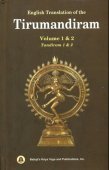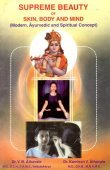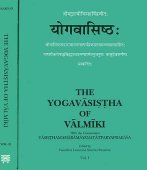Self-realization, Self-realisation: 1 definition
Introduction:
Self-realization means something in Hinduism, Sanskrit. If you want to know the exact meaning, history, etymology or English translation of this term then check out the descriptions on this page. Add your comment or reference to a book if you want to contribute to this summary article.
In Hinduism
Yoga (school of philosophy)
Source: ORA: Amanaska (king of all yogas): A Critical Edition and Annotated Translation by Jason BirchSelf-realization can be denoted by the Sanskrit term Sva-Avabodha, according to the Amanaska Yoga treatise dealing with meditation, absorption, yogic powers and liberation.—Accordingly, as Īśvara says to Vāmadeva: “[...] Learned scholars who possess intellect do talk about the highest Brahma, [but] those who are skilled in communicating [even] a small part of self-realization (svāvabodha) are hard to find in this world. [...]”.

Yoga is originally considered a branch of Hindu philosophy (astika), but both ancient and modern Yoga combine the physical, mental and spiritual. Yoga teaches various physical techniques also known as āsanas (postures), used for various purposes (eg., meditation, contemplation, relaxation).
See also (Relevant definitions)
Partial matches: Realization, Self.
Query error!
Full-text (+58): Parashiva, Atmanubhuti, Atmasadhane, Amtarjnana, Parashiv, Atmanand, Atmonnati, Atmananda, Antargyan, Sthitaprajna, Atmanupavam, Atmakrishi, Jnanin, Communication, Atman, Gyani, Adhigamajasamyaktva, Avabodha, Samadhi, Atmananam.
Relevant text
Search found 150 books and stories containing Self-realization, Self-realisation; (plurals include: realizations, realisations). You can also click to the full overview containing English textual excerpts. Below are direct links for the most relevant articles:
Buddha-nature (as Depicted in the Lankavatara-sutra) (by Nguyen Dac Sy)
5. Self-Power < [Chapter 5 - The Practice of Buddha-Nature in the Laṅkāvatārasūtra]
6. The Other Power (adhiṣṭhāna) < [Chapter 5 - The Practice of Buddha-Nature in the Laṅkāvatārasūtra]
2.2. Chan and the Laṅkāvatāra-sūtra < [Chapter 6 - Further Development of the Thought of Buddha-nature in China]
Creative Art and Yoga-Sadhana < [April – June 1992]
Lal-Ded: Saint Poetess < [October – December, 2006]
Tagore’s Humanistic Concept of Literature < [August 1947]
Traces of Mysticism in Jainism (Study) (by Sadhvi Madhystha Prabha)
2.6. Traces of Mysticism in other Aṅga Āgama < [Chapter 3 - Mysticism in Śramaṇic Literature]
The concept of Dhyāna (Meditation)—Introduction < [Chapter 4 - Concepts of Jainism and Mysticism]
Jain Scholars (2) T. K. Tukol < [Chapter 6 - Direct and indirect views on Jaina Mysticism]
Yogashikha Upanishad (critical study) (by Sujatarani Giri)
Part 5.2 - The Goal of Life < [Chapter 5 - Nature of Yoga practice in Upaniṣad]
Part 6.5 - Schools of Yoga (5) Karmayoga < [Chapter 1 - Introduction]
Part 4.2 - Niyama (Observances) < [Chapter 1 - Introduction]
Cidgaganacandrika (study) (by S. Mahalakshmi)
Verse 20 [Ambā as Caṇḍi transcends Sāṅkhya and Yoga] < [Chapter 1 - First Vimarśa]
Part 1a - Krama system (Introduction) < [Krama system and Trika school]
Part 4 - Nine-fold grace of Śiva < [Philosophy of Kashmir Tantric System]
Related products


